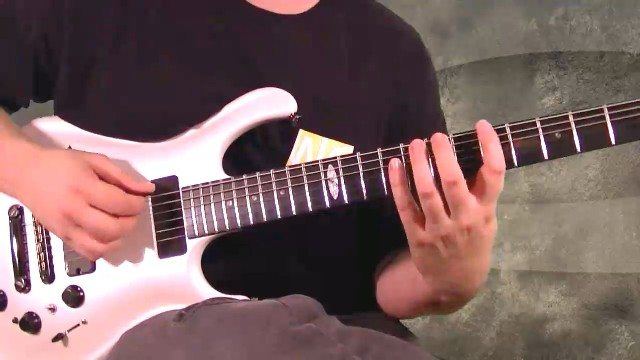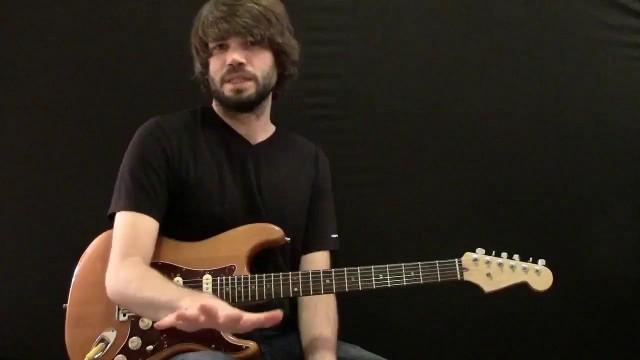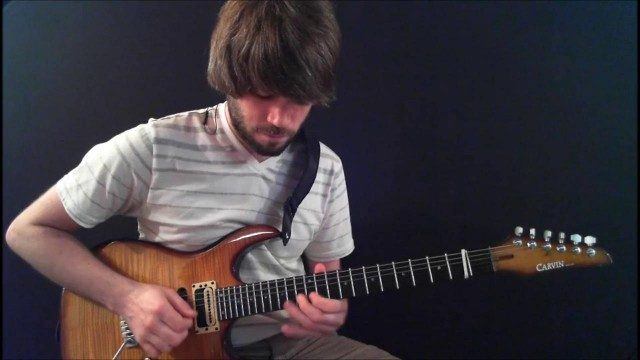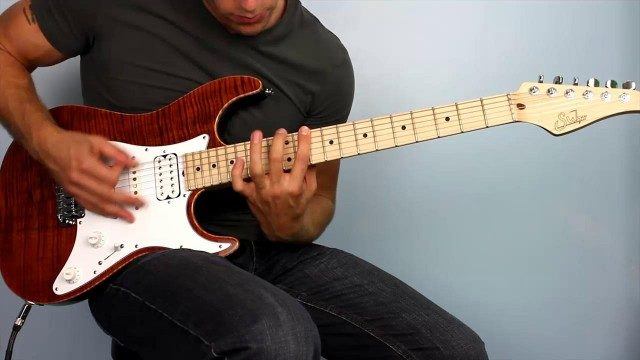Now, just as we did in the Pentatonic Finder tutorial, we need to set a "range" of the fret board to work with.
As in that tutorial I've chosen to have you start with the first position (Box 1) of the blues scale, as "home base". This time however, we'll be moving in the keys of Dm and Fm.
When in that "range" of the fret board (say frets 9-14) the only box of D that falls squarely within is box 1.
And the only box that falls within that range if F, is the 5th box. In the last picture below you can see the two superimposed. Note also that I'm using the Blues Pentatonic with added b5, not just the Minor pentatonic. As I explained in the previous tutorials, it is good to learn the Blues shapes since those present more distinctly different shapes that does the plain pentatonic. I.e it will be easier for you to orient yourself across the fretboard using those (this doesn't mean of course that you have to USE the b5, just using that shape to orient yourself).
Another reason for this choice is that I've chosen Dm and Fm, which are keys with a distance of a b3 between them. This distance is very common in blues, jazz and fusion when it comes to key changes, since they sound "natural" and musical, and also because the keys will have many notes in common, making it easier to connect the two over the changes in a more musical manner.
What we will do first is to target the roots when changing keys. That is, when the first change from Dm to Fm comes along, you will land on the F. Seeing how the F is also the b3 of Dm, in case you are in a phrase that contains this note when the change comes, you may just stay on that note over the change and the new key will resolve itself very nicely into the root.
I explain and talk in more detail about things to consider here in the video, so make sure to watch it through from start to finish, and the short improvisation at the end examplifying the concept.




























